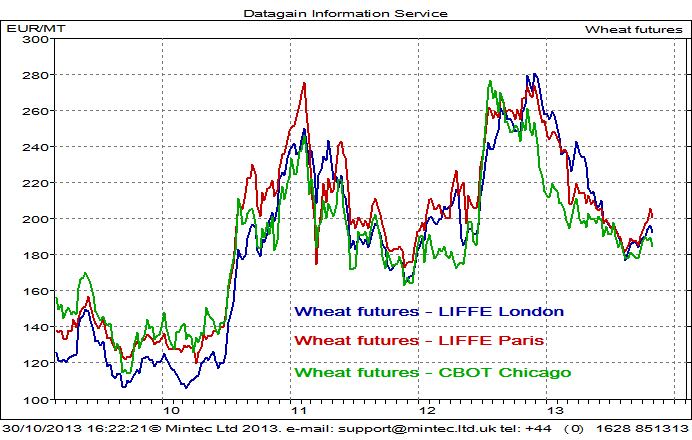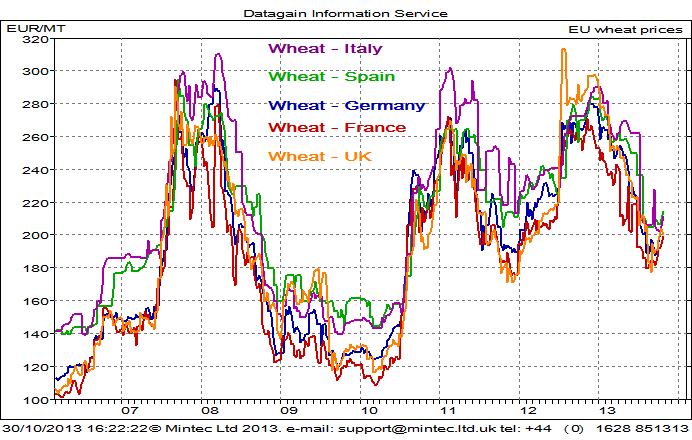Wheat market analyst at Mintec Yuliya Nam-Wright told BakeryandSnacks.com that timing wheat purchases by carefully considering the global market would help bakers secure a better market price.
When to buy?
Over 80% of wheat is produced in the Northern Hemisphere and harvested between June and August, whereas the smaller Southern Hemisphere crop is harvested between December and February.
Nam-Wright said that this made the second half of the calendar year more vulnerable to price fluctuations. “Prices tend to react to harvest reports as final information becomes available to the market highlighting any differences with earlier expectations,” she said.
There may therefore be an argument to carefully monitor the wheat market and consider wheat purchases in the first half of the calendar year when prices are less susceptible to price hikes.
Wheat: A global commodity
Nam-Wright said that wheat was a global commodity, meaning that events in key growing regions, even if outside the EU, could impact EU prices.
“The wheat market is very global. What happens in the US and Russia is worth tracking.”
For example, in the 2010/11 season most markets globally experienced price hikes due to a Russian ban on wheat exports, which heavily impacted bakery manufacturers.
A lot of wheat from the former Soviet nations is exported to the Middle East and North Africa, where weather conditions impede wheat cultivation. When supply from Russia falls, its wheat is replaced by supply from other major exporters, such as France and the US, reducing the availability and raising prices in the global market.
Current market conditions
In the current market, prices have fallen from peaks reached last year, when supply was reduced by drought in Russia and the US.
However, prices have risen in recent months due to southern hemisphere crop concerns. This has been driven by dry weather in Argentina and slow wheat plantings in the Black Sea region due to heavy rains. This comes amid strong demand from China and Brazil.
According to the US Department of Agriculture (USDA), global wheat production for the 2013/14 season is projected to rise 8% to reach a new record of 708.9m metric tons (MT). Meanwhile consumption is also expected to reach a record high of 706.5m MT, with ending stocks expected to be 176.3m MT.

EU price variations
The cost of wheat across Europe varies. Spanish wheat for example is currently slightly more expensive than most other EU countries while French wheat is a little cheaper, but the prices differences are largely negligible and reflect global prices.
Nam-Wright said that to her knowledge, there were no trade barriers to inter-EU trade, and prices within the EU generally tend to follow similar trend.

European bakers can import wheat from outside the EU, but will incur levies and will be limited to quotas set by the EU Common Agricultural Policy (CAP).
Wheat type and origin has biggest cost impact
Nam-Wright said that one of the main differences in price was between the different origin and types of wheat. For example, hard wheat from the US tends to be more expensive than the soft wheat that is exported from Ukraine, also major exporter in the global market.
Bakers can choose a short or long term contract. The analyst said that the length of the contract largely depended upon the size of the company and their focus, which would determine whether securing volume or fair price is more important.
Three largest exchanges that trade wheat futures are: LIFFE London, LIFFE Paris and CBOT Chicago. Nam-Wright said that there were not great price variations between the three exchanges.
For more on this special edition:
Bakers look to commodity supply for cost management
Enzymes have money-saving potential, says Campden BRI
On the cheap: Bakers must look beyond ingredients to cut costs
